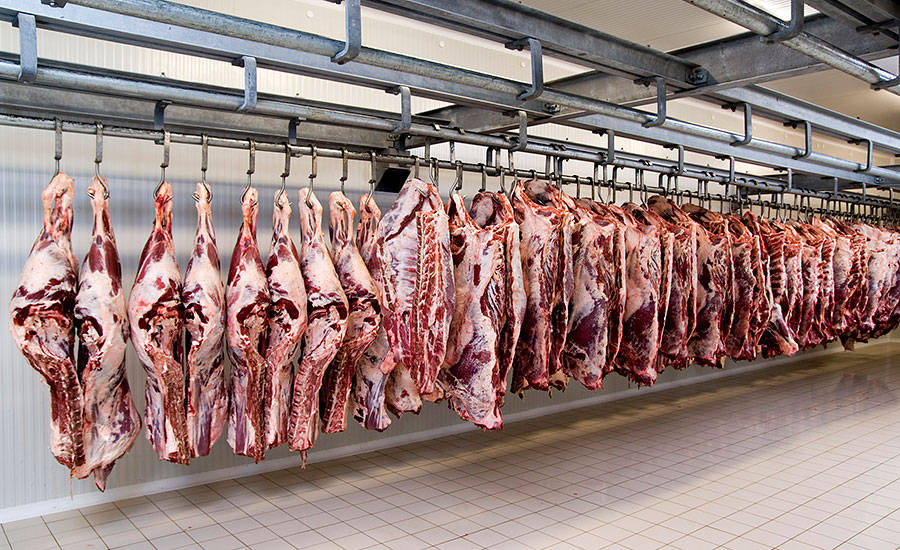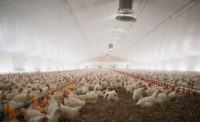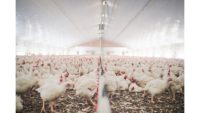Supplier's Perspective
How to reduce water usage during carcass washing

For protein processors, carcass washing on the harvest floor is one of the plant’s biggest offenders when it comes to water usage. Carcass wash cabinets can pump out as much as 350 gallons per minute as they remove bone dust, loose tissue, and other soil. That’s about 336,000 gallons a day in a two-shift plant!
It can cost hundreds of thousands of dollars a year to bring water into a carcass wash cabinet, heat it, and treat the waste water. Plus, many facilities have introduced an antimicrobial step into the process, adding diluted peracetic acid, lactic acid, or bromine to the carcass wash, which further increases a plant’s cost of operation.
To cut costs without compromising food safety, plants should look for ways to reduce the amount of water utilized on the harvest floor. Luckily, there are several ways to do this through regular inspections, training and technology.
Regular inspections
It may be a mundane task, but spending time inspecting machinery is a crucial step in making sure equipment isn’t wasting water. Regular maintenance is needed, and damage should not go unaddressed.
Take this situation we saw in a high-volume beef plant: a carcass fell and damaged a spray pipe in a cabinet. The damaged pipe allowed water to spew out uncontrolled, losing gallons per minute. This is not only wasteful, but it could also make the equipment less effective due to disrupted spray patterns and lead to an even more costly issue.
One of the most common water efficiency oversights stems from the nozzles. The wear and tear these components endure can cause the orifices to expand, which increases the amount of water sprayed and reduces efficacy. Nozzles should be examined monthly and replaced when necessary, typically every six months to one year.
Employee training
A proper inspection first requires that workers are well-trained and understand how the equipment works so they are more likely to spot potential problems.
Do the right employees know where spray nozzles should be hitting the carcass for an effective wash? Are they checking the pressure gauges? Do they know if the equipment is operating under parameters set by the manufacturer?
The best way to feel confident in employees’ knowledge is to have an expert, like a factory-trained technician, provide guidance and education directly to those who work on the harvest floor. Plants should develop and follow a consistent, systematic approach to carcass washing and equipment maintenance.
New technology
The quickest and most effective way for a plant to use water more efficiently is by procuring more technologically advanced equipment. There are innovations in food safety equipment that give processors a sustainable and profitable advantage, such as a recirculating hot water pasteurization system that dramatically reduces waste water. This particular type of equipment reduces and controls microbials.
Look for solutions that have been validated in other plants. There is equipment on the market that’s been shown to cut water use by more than 30 percent, which means a plant can potentially recoup the cost of their technology investment in less than one year.
Processors can certainly continue their current ways of handling carcass washing, but at a time when the worldwide deficit of fresh water is intensifying and protein processors are facing increased pressure to maintain margins, why wouldn’t you look for ways to reduce water use and save money, all without impacting the safety or quality of your product?
For more information about Birko Corp., visit www.birkocorp.com. NP
Looking for a reprint of this article?
From high-res PDFs to custom plaques, order your copy today!







